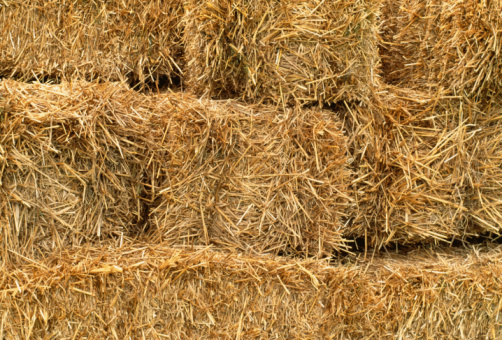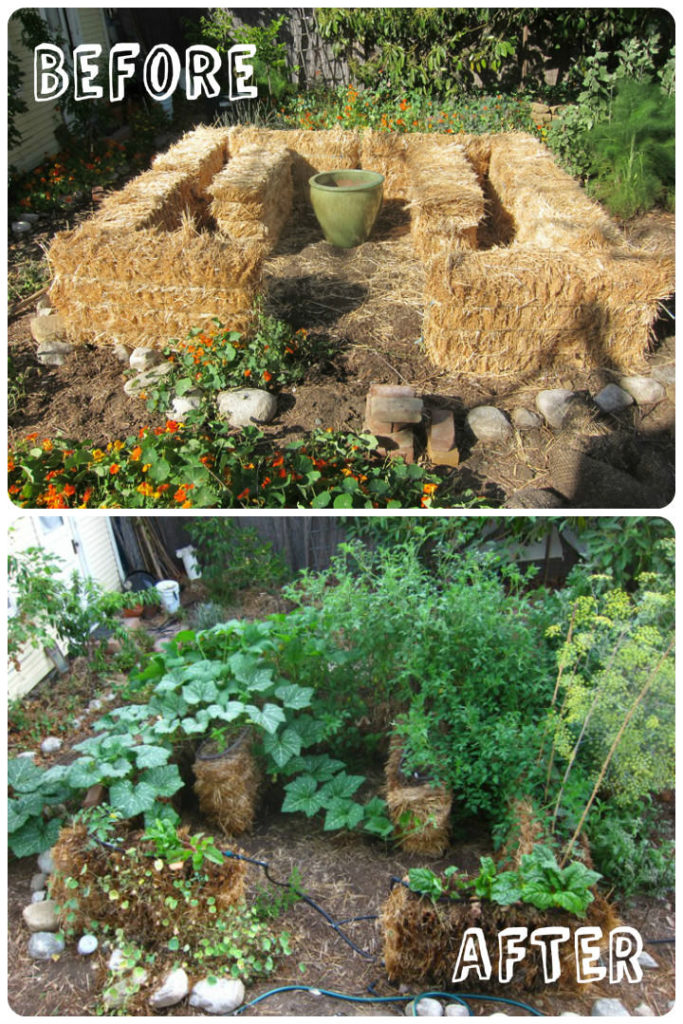Gardening with Hay or Straw Bales
Having trouble getting your garden tilled? Why not try planting into some hay or straw bales. I have friends that have done this over the past few years and pretty successfully. Now, which to use – hay or straw? I’m happy to pass on information they have learned and shared with me …
Food for Thought:
- Straw bales contain less seed and last longer but straw is more expensive. You can make your choice based on the best buy or which crop you’re growing. (squash and gourds in hay OR tomatoes and peppers in straw)
- Make sure you get bales that still have the string TIGHTLY around the bale. It will give you more control when moving the bales.
- Be sure to select where you want your garden and position the bales since they get pretty heavy once they get wet.
- If at all possible, let them sit out for some time, especially during the late winter or early spring so that they wet throughout.
- If you are purchasing your bales in the spring, thoroughly soak then and let them begin to break down before you plant your vegetables. If the weather is warm, soak them several times during the day over a number of days.
- After the thorough soaking, apply liquid fertilizer to the top of each of the bales. You can make liquid compost or manure tea. Repeat this for three or four more days depending on the crop you will grow. Once you’re done with fertilizing, allow a couple days for the bales to set.
- Once bales are set, apply a 50-50 mix of topsoil and manure on the top of each bale, the soil should be about 4 inches thick. This will hold the moisture in the bale and make a great place to plant seeds.
- Moisten the bales with a fine spray of water and you are ready to plant! Pull apart the bale by hand to make a hole to put your plant – you might want to add some soil if planting a transplant.
Crop Spacing:
Each bale should hold two tomato plants, four pepper plants or two squash plants. Cucumbers and lettuce need to be spaced differently – use the square foot gardening spacing guide, i.e. six to eight cucumbers, three yellow squash, or 12-15 bean seeds per bale … and lettuce should be spaced six inches apart.
Did you know that annual herbs like basil, cilantro and parsley do great in bale gardening? You can mix them in with other vegetables.
When planting watermelon and cantaloupe, be sure to plant them in straw and use a stronger fertilizer mix since they are heavy feeders.
FYI – root crops don’t do so well in bales since their roots are crowded.
Tips:
- Buy your bales off season for a better price. Sometimes you can get “last year’s” hay in the late spring for almost free.
- Plant flowers around the base for a fun look to your bale garden.
- Stack the bales two high if you want a garden that is easy on the back!
- Bales should last two years.
- When you are done using the bales, compost them for more soil for another gardening year!

Photos.com
